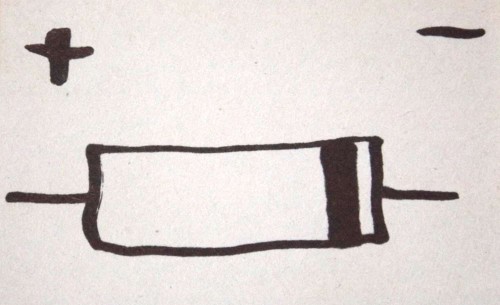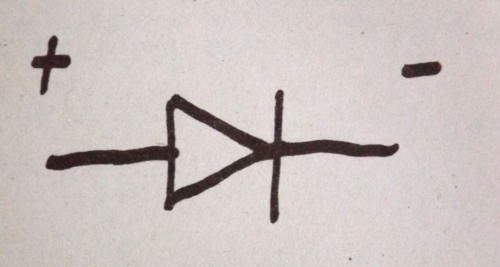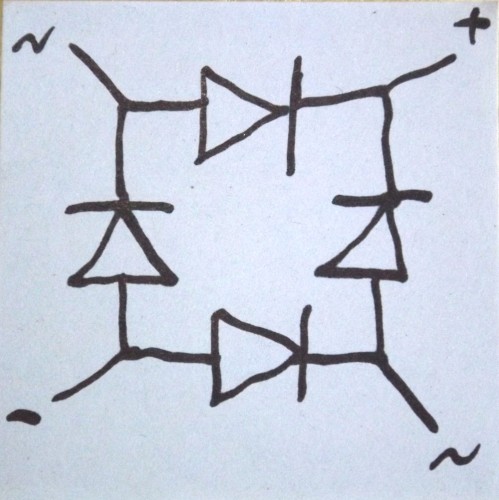Electronics Basics - Understanding The Diode and Bridge Rectifier
This is the first article in the series of understanding electronics. Today we are starting out with the diode and bridge rectifier. I will show you how a diode works, how to identify a diode and how to read schematics diagrams for the diode.
A diode is one of the most common devices used in electronics. This is a very simple device. We will not go into the depths of how a diode is manufactured or how it works internally. We are going to keep it simple for now and get you started in electronics.
A diode acts like a one way valve. It allows electricity to flow in one way but blocks it in the other direction. If you can imagine electricity flowing like water in a hose, a diode is like a one way valve in the line.
A standard diode shown with arrow pointing to the negative (silver bar) lead
If you refer to the image above you can see a standard diode. There is a silver bar on a diode which indicates the negative lead. See the red arrow in the image above. The other lead is the positive lead.
Here is my simple drawing of a diode showing the silver bar (drawn in black) which indicates the negative lead.
Drawing of a standard diode
Again, you see the bar which indicates the negative lead in the drawing.
And here is the schematic diagram of a diode:
Schematic diagram of a diode
In the drawing above you can see that there is a triangle pointing to a bar. The bar again indicates the negative lead therefore the other lead must be the positive wire. This is how you will find a diode drawn up in electronics schematics.
Note that the silver bar on a diode is also denoted on the schematic diagram. This makes it so easy to remember which lead is the negative wire.
A diode sort of acts like a traffic cop on a street corner, directing the flow of traffic. In the Bedini Motor we will be building soon, the diode allows energy to flow into the battery to be charged but blocks it from flowing out of the battery and back into the circuit.
Now a diode will only allow electricity to flow from the positive to the negative and not in the other direction. This is very useful in electronics circuits such as converting AC (Alternating Current) to DC (Direct Current) or for blocking the flow of electricity in the wrong direction.
Below you will see another type of diode called a Bridge Rectifier. A bridge rectifier is actually four diodes in a single package. These are used to filter out AC into DC voltage.
Bridge Rectifier diode
And here is the schematic diagram for a bridge rectifier:
Bridge Rectifier schematic diagram
In the drawing above you can see four symbols on the outside corners. There are the positive and negative (plus and minus signs) polarities of the bridge rectifier. And then there are two squiggly lines. Those two squiggly lines stand for AC power connections.
The bridge rectifier diode will take an incoming AC voltage and sort out the positive pulses from the negative pulses, only allowing them to flow into their respective terminals. This is very convenient for charging up a battery for example from an AC power outlet.
And, because a diode is a one way valve, the battery cannot discharge back into the circuit. The diode blocks the flow of energy backwards.
There are more types of diodes but for today we will keep it simple. We can cover the other types of diodes in future articles. We will cover how to test a diode later on as well.
You can watch today's video here: Beginners Electronics ~ Understanding The Diode & Bridge Rectifier
While you are over there please subscribe to my YouTube channel and follow my projects and experiments in alternate energy and electronics.
About the Author
| Troy Reid |








